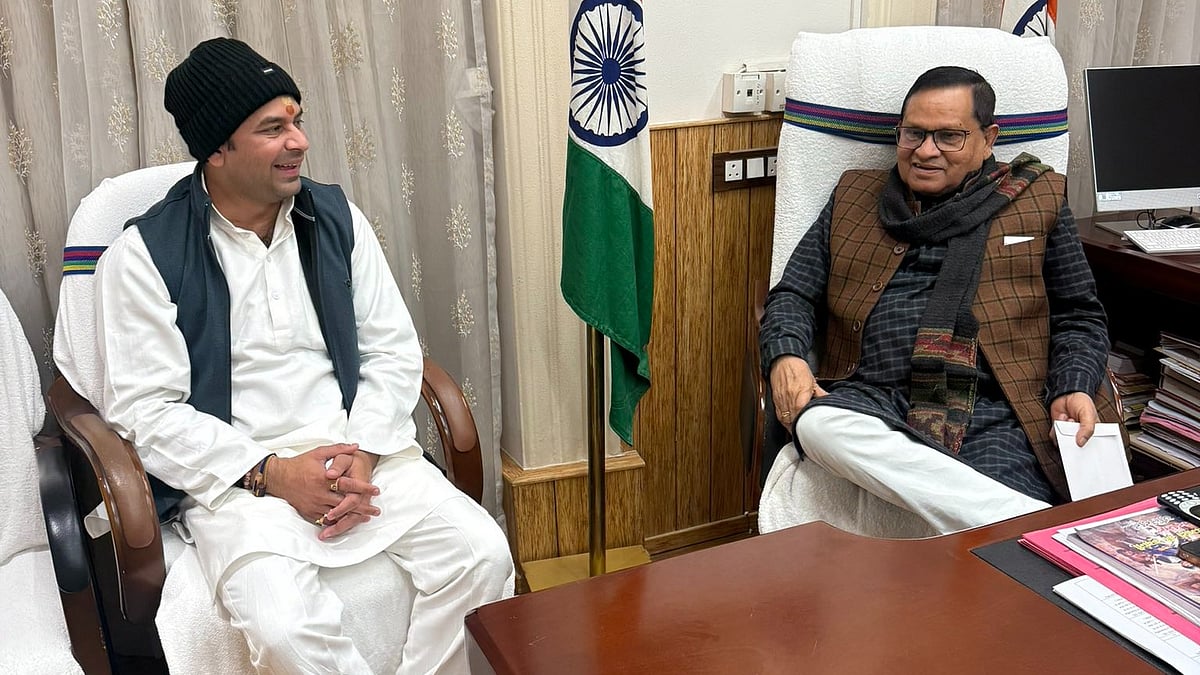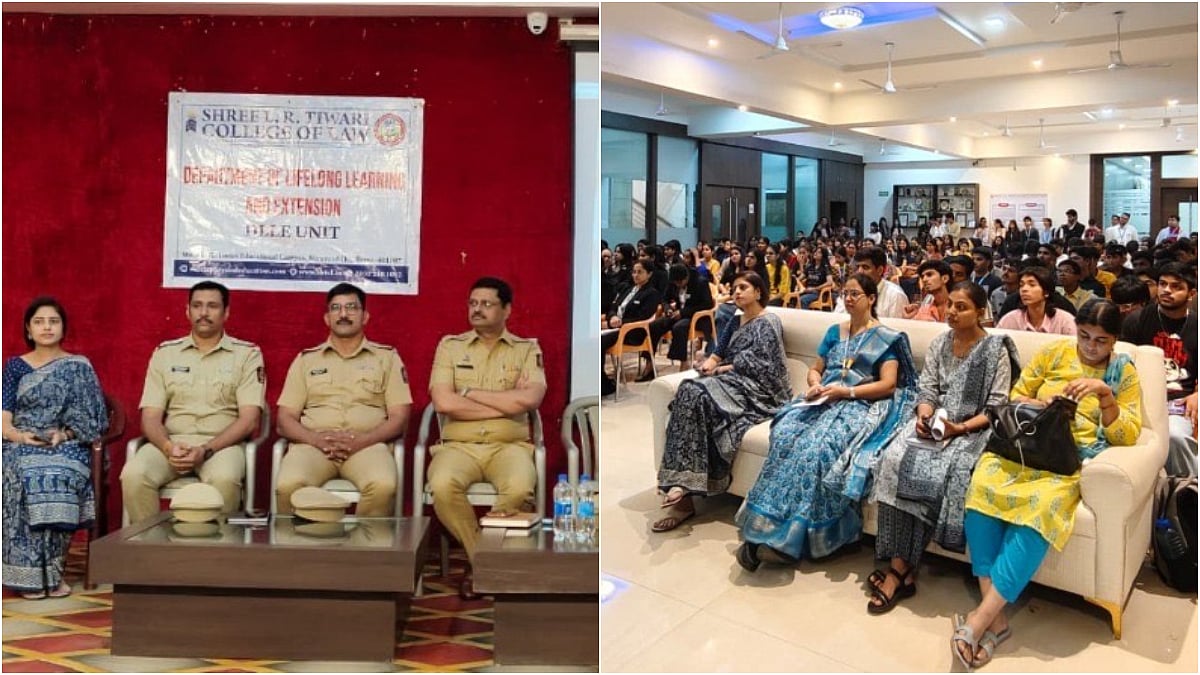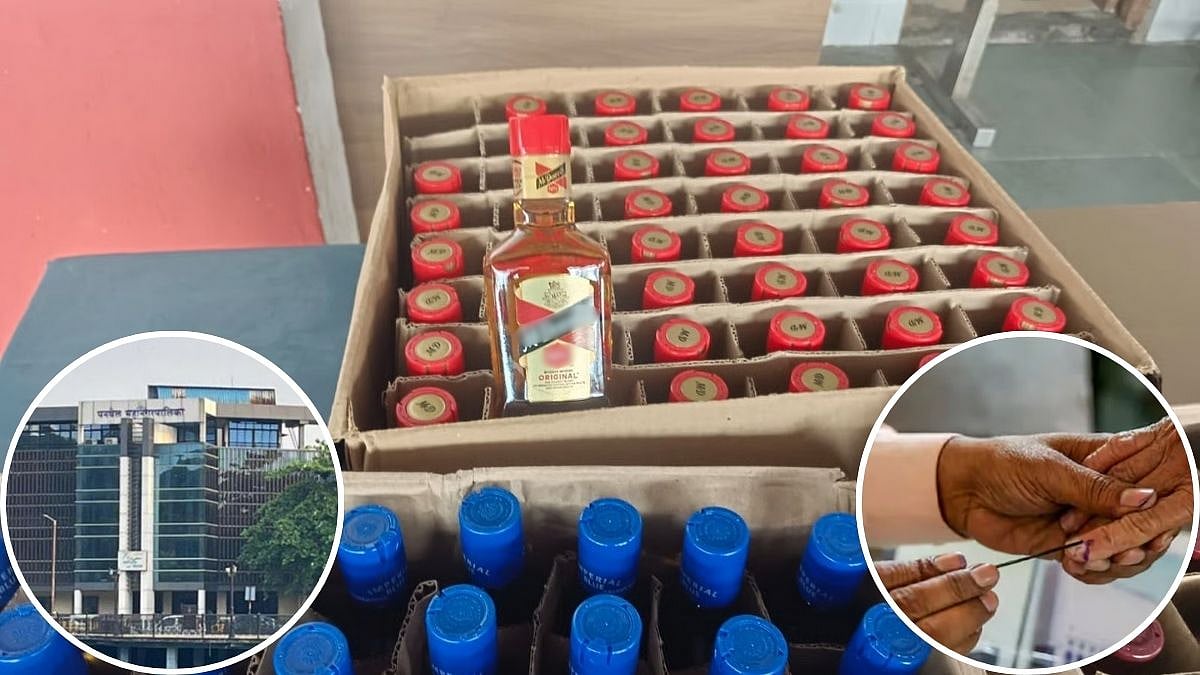The deities at Mumbai's Mahalakshmi Temple are bearing a new look after multiple layers of sindoor or vermillion that had collected on the idols over the last 40 years were removed meticulously in a ritual that lasted 13 days.
Inner sanctum of temple was closed for hinguli ritual
The inner sanctum of the temple, located on Bhulabhai Desai Road, was closed between February 7 and 19 for the removal of the sindoor, or hingul, in a ritual called hinguli.
The sanctum reopened on February 20 and devotees are enthralled by the idols, which can now be seen for half an hour in the night in their original form as they looked when they were originally carved out of black stone.
"We would recommend every Mumbaikar to visit the Mahalakshmi temple at 9:45 pm on any day to see the beautiful idols without the shringar," said B Shridhar, a devotee. "They have slowly and meticulously removed the old layers of sindoor revealing the most beautiful intact idols of Goddess Mahakali, Goddess Mahalakshmi and Goddess Mahasaraswati."

Mahalaxmi temple, Mumbai | FPJ
Sanctum was reopened on Feb 20
During the hinguli ritual, entry into the gabhara or inner sanctum of the temple holding the idols of the goddess and other deities was not allowed and devotees could only see an image of the deities from the outer ring of the gabhara. The sanctum was reopened at 6.00 am on February 20.
During the day, the deities are adorned with cloth, ornaments and a mukhut or mask made of gold. This adornment of the deity is called shringar. At 9.30 pm, the temple priests remove the shringar on the idols when it shuts down for the night.
Devotees are allowed darshan for another 30 minutes before the door of the gabhara closes at 10.00 pm. This is when devotees can see the idols in their original stone forms, devoid of any ornamentation.
Can witness deity in original form for 30 minutes
Nitin Kambli, manager of the temple, said, "The sindoor, which is applied to the idols as lep (paste) during rituals, had collected in layers over more than 40 years. You can see the deity in the original form for 30-minute period between the removalof the shringar and the shej aarti at 10.00 pm."
The temple has three-feet-tall idols of Adi Shakti or the Mother Goddess in three of her incarnations - Mahakali in the form of Mahishasuramardini standing on the head of a bull, Mahalakshmi holding two lotus in her hands, and Mahasaraswati holding a veena.
Sindoor, mostly derived from minerals, is ritually important in worship because of its colour. It is one of the materials used for anointing deities during the abhisheka ritual. Other substances that are used include milk, water, and honey. Sindoor can collect in layers and has to be removed periodically. The city’s most visited temple, the Siddhivinayak Ganpati shrine in Prabhadevi, also holds this ritual, but it is done more regularly. At Mahalakshmi, for reasons not revealed, this was done after more than four decades.
Photography of the idols without shringar is not allowed, so devotees will have to queue up at nighr for darshan of the original idols.
Mahalakshmi Temple's links with Mumbai's history
It is believed that idols from an old temple were removed and immersed in Worli Creek to save them from invaders. When European colonists took over the islands that later became Mumbai, it was decided to construct a breach across Worli Creek to connect Worli Island with Malabar Hill. An Indian engineer, Ramji Shivji, was given the job. Shivji could not start the construction because of the strong tides in the creek. He had a dream where Goddess Mahalakshmi asked him to recover the idols from the creek. The deities were installed in a new temple built on a hillock overlooking the sea. The temple was built between 1761 and 1776 AD for Rs 80,000, part of which was paid by the colonial administration. The land reclaimed after the construction of the breech is where the race course and Lower Parel stand today.







